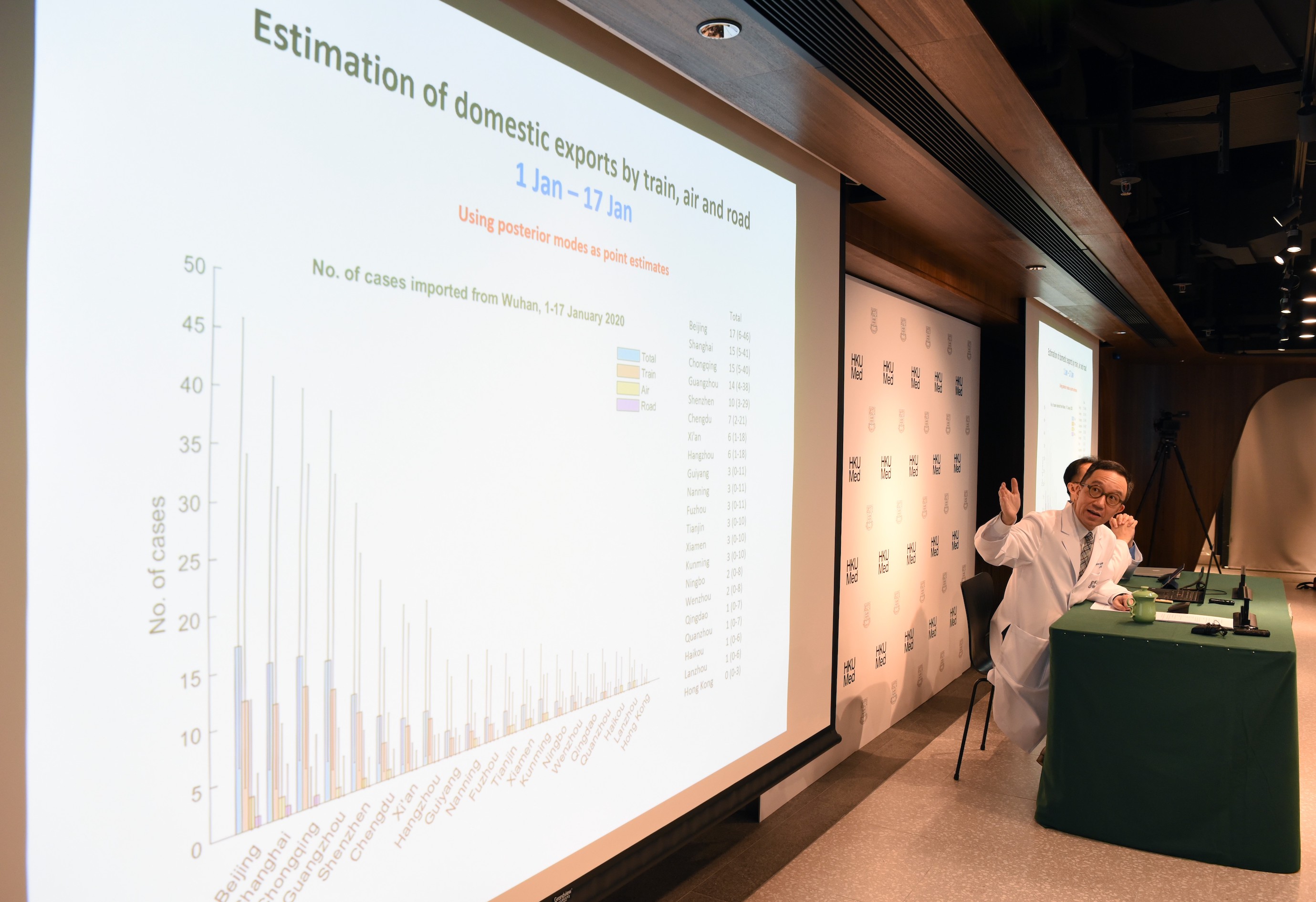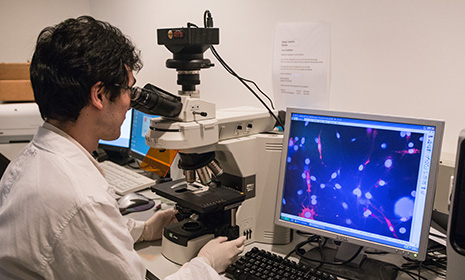Press Release: HKUMed WHO Collaborating Centre for Infectious Disease Epidemiology and Control releases real-time nowcast on the likely extent of the Wuhan coronavirus outbreak, domestic and international spread with the forecast for chunyun
Kathy Leung1 , Joseph T. Wu1 , Gabriel M Leung1
1WHO Collaborating Centre for Infectious Disease Epidemiology and Control, School of Public Health, LKS Faculty of Medicine, The University of Hong Kong, Hong Kong SAR, China
Our original results in the study (https://files.sph.hku.hk/download/wuhan_exportation_preprint.pdf) are NO LONGER VALID given that the reported no of exported cases have essentially doubled from 24 hrs ago when the model was completed. Reconfiguring model but expect multiples of the first estimates in a nonlinear way.
This study is routinely updated as new information is available. Our most recent analysis considers the situation as of 8:30am on January 21, 2020.
In this note, the meaning of “cases” differs by context as follows:
Case definition by Chinese Center for Disease Control and Prevention (China CDC)
Definition of suspected cases*:
- Fever ≥ 38°C
- Radiographic findings of pneumonia or acute respiratory distress syndrome
- Normal or reduced white blood cell counts or reduced lymphocyte subset counts
- No improvement or deteriorate after 3-5 days of antibiotics treatment
Definition of probable cases:
- Suspected case
- Epidemiologic link or history
Definition of confirmed cases:
1 st case in the province:
- Probable case
- Detection of virus nucleic acid at the City, Provincial and National CDC
2 nd case or after in the province:
- Probable case
- Detection of virus nucleic acid at the City and Provincial CDC
Case definition used in the modelling study
Symptomatic cases who could be detected by temperature screening at international borders and/or with disease severity of a level requiring hospitalization plus travel history to Wuhan.
*“Definition of suspected cases of unexplained pneumonia” were from National Health Commission of the People’s Republic of China on http://www.nhc.gov.cn/.
Summary
Background
Since December 31, 2019, the Chinese city of Wuhan has reported an outbreak of atypical pneumonia likely caused by the 2019 novel coronavirus (2019-nCoV). Cases have been exported to other Chinese cities as well as internationally.
Methods
Using the number of cases exported from Wuhan to other countries (see case definitions on the title page), we first inferred the number of cases that had occurred in Wuhan during 1-17 January 2020. We then estimated the number of cases that had been exported to other Chinese cities during the same period. Next, we forecasted the national and international spread of 2019-nCoV by air, train and road traffic during one week immediately before and after the first day of Spring Festival or Lunar New Year (January 25), accounting for the effect of wet market interventions and temperature screening of air and train passengers that had been recently implemented in Wuhan (exit port) and elsewhere (entry ports). Finally, we presented a statistical tool for predicting in real time the final outbreak cluster size in the event of a super-spreading event (SSE) and demonstrated its performance in the 2015 nosocomial outbreaks of MERS in Seoul and the 2003 Amoy Gardens community outbreak of SARS in Hong Kong.
Findings
We estimated that 1,343 (547-3,446) cases had had onset of symptoms in Wuhan during 1-17 January 2020. We estimated that Beijing, Shanghai, Chongqing, Guangzhou and Shenzhen had imported 17 (6- 46), 15 (5-41), 15 (5-40), 14 (4-38) and 10 (3-29) cases from Wuhan during this period, respectively. If wet market interventions had reduced the force of infection by 75% and temperature screening could detect 50% of symptomatic passengers, the expected total number of international case exportation during the two weeks straddling the first day of Spring Festival would be 0.81 (0-3). However, cases would likely continue to be exported from Wuhan to Beijing, Shanghai, Chongqing, Guangzhou and Shenzhen during this period. If SSEs were observed in the nosocomial or community settings (as seen in previous outbreaks of SARS and MERS), our statistical tool can accurately and precisely predict the final outbreak size within 2-5 days after three or more cases of the cluster has been observed.
Conclusions
Situational awareness by nowcasting with real time updates is critical to public health control of 2019- nCoV, as for other newly emerging pathogens. Our forecasts, based on actual travel patterns by different modes of transport, are dependent on some key assumptions including the absence of superspreading events, containment of a single epicentre at Wuhan and robust surveillance and satisfactory adherence to public health control measures everywhere. Further delineation of actual epidemiological parameters for 2019-nCoV would improve model performance.
Download Presentation Slides here
Useful Links
https://files.sph.hku.hk/download/wuhan_exportation_preprint.pdf

Professor Gabriel Leung, Chair Professor of Public Health Medicine, HKUMed, and Founding Director of the WHO Collaborating Centre for Infectious Disease Epidemiology and Control (left) and Professor Joseph Wu, Professor, Division of Epidemiology and Biostatistics, School of Public Health, HKUMed (right) present real-time nowcast and forecast on the extent of the Wuhan CoV outbreak, domestic and international spread.









.png)
